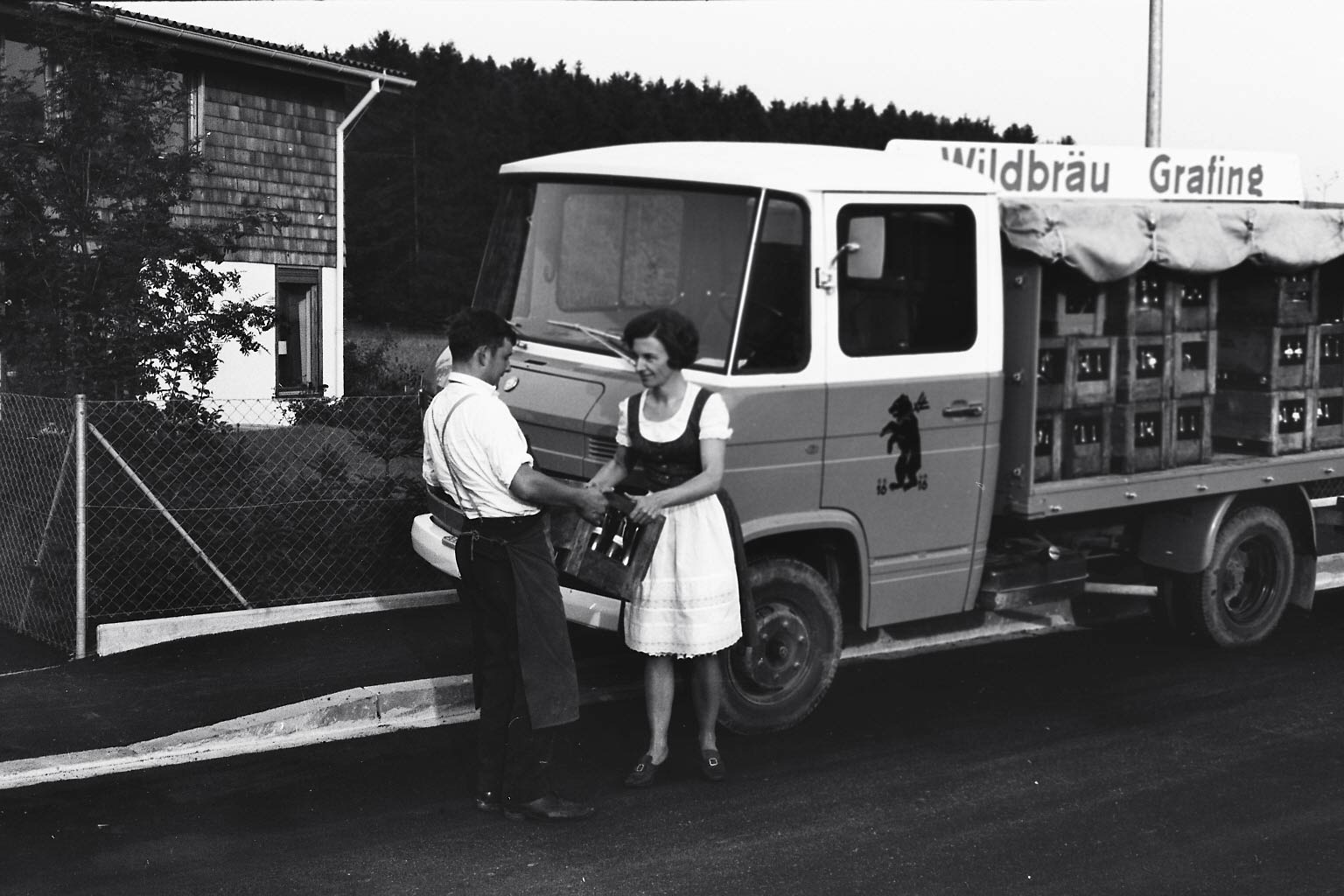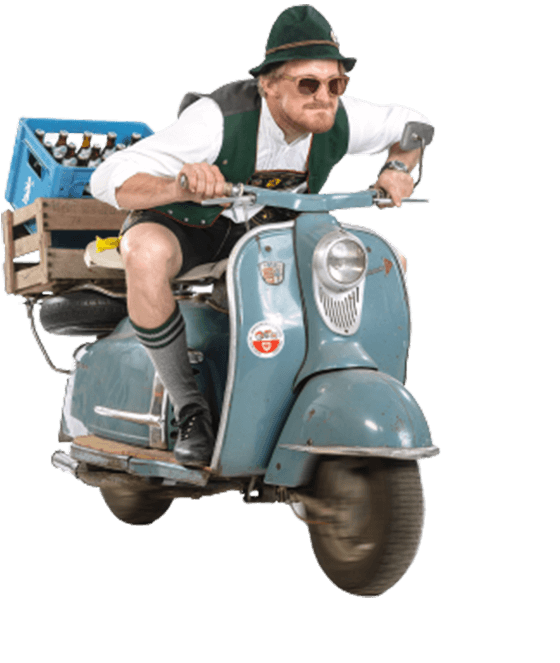wo kema her und wo gäds hi?
Für 100.000 Jahre liegt das Land, das später Grafing werden soll, tiefgefroren unter 500 Meter dickem Eis. Bis vor 10.000 Jahren endlich die Temperaturen steigen und der Inngletscher abtaut. Zurück bleiben der Inn, das Rosenheimer Seenbecken und die bildhübsche, hügelige Moränenlandschaft rund um Grafing.
Als die Nachfahren des modernen Menschen das Alpenvorland erreichen, dringen sie bis ins Rosenheimer Becken vor, das zur Heimat der Bajuwaren wird. Dort entwickeln sie ihre ganz besondere bayerische Lebens- und Sprachkultur.
Die Geburtsstunde von Wildbräu: Älteste Privatbrauerei der Welt
Als Herzog Heinrich II im Jahre 960 für seine Gemahlin Gisela das Landgut Gisling erbaut, legt er damit einen bedeutenden Grundstein für das Entstehen der Ortschaft Grafing. Denn als er einen innerfamiliären Herrschaftskampf mit seinem Onkel Otto I, Herzog von Sachsen und König des Ostfränkischen Reiches verliert, wird ihm das Anwesen entzogen, an den gegnerischen Grafen weitergegeben, der es in „Landgut Grafing“ umbenennt. So entsteht der herzogliche Gründungsort Grafing und der Geburtsort des heutigen Wildbräus. 1060 – unser Gründungsdatum. Der Priester Konrad übereignet der Benediktinerabtei Ebersberg ein Anwesen in Sulding und erhält dafür jährliche Naturalzuwendungen aus dem Landgut Gisling / Grafing, so unter anderem ein feststehendes Kontingent an damals dort schon gebrautem Vollbier („cervesia plena“).
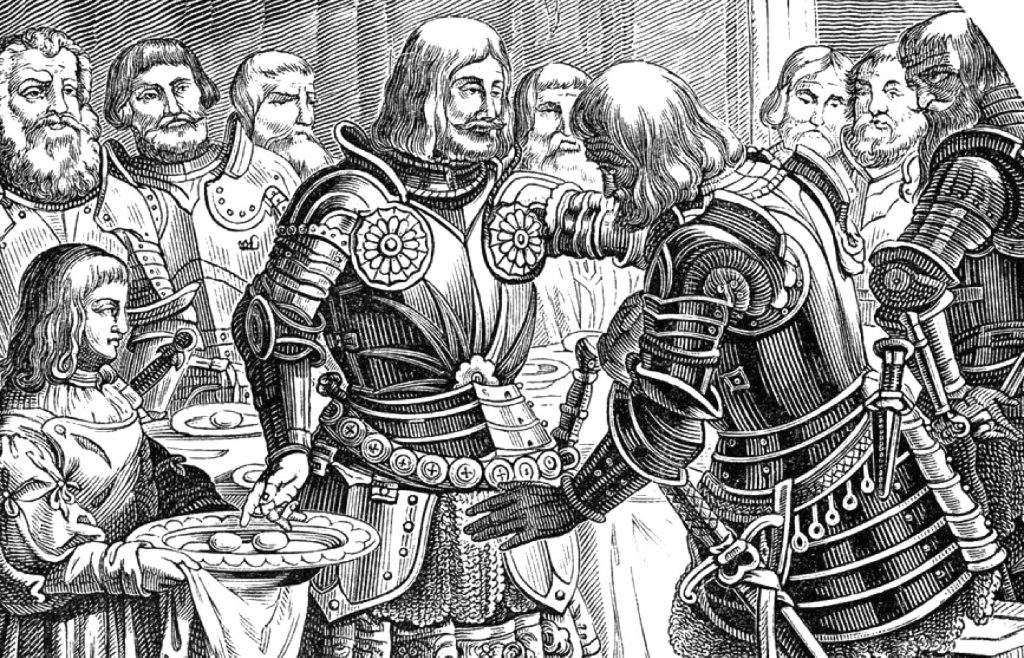
Das Bräustüberl des Wildbräu: Ein Jahrhundertealter Treffpunkt
Bereits im Jahre 1205 erhält das adelige Landgut Grafing dann das „Ius Tavernae“, das Schankrecht als Taverne. Seit nun 816 Jahren wird dort also ein Wirtshaus betrieben. Es nennt sich heute das „Bräustüberl“ des Wildbräu.
Währenddessen geht der Kampf um die Herrschaft weiter. Wittelsbacher und Habsburger ziehen jahrhundertelang gegeneinander in den Krieg. Als die Grafinger ihren Ludwig IV von Bayern in der entscheidenden Schlacht bei Mühldorf 1322 siegreich unterstützen, kommt ihnen laut Legende eine besondere Ehre zuteil.
Nach der Schlacht bedankt sich Ludwig beim Grafinger Fähnlein: „Ihr habt stark und mutig wie die Bären gekämpft.“ Neben großer Dankbarkeit profitieren die Grafinger in den folgenden Jahren von einer großzügigen Steuerbefreiung. Und als sich Herzog Ludwig IV vollends durchsetzt, erst König und fünf Jahre später Kaiser wird, übernehmen die Grafinger den Bären 1430 stolz ins Stadtwappen.
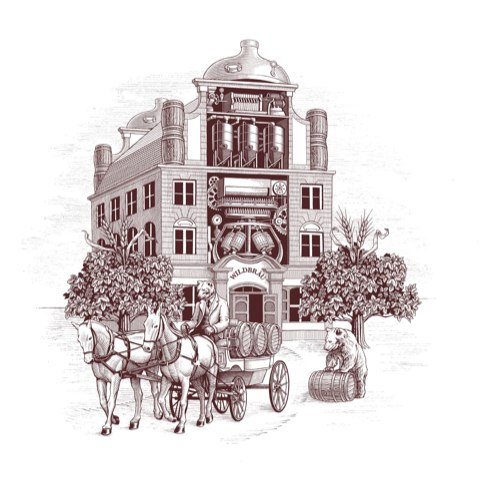
Vom Tapferen Fähnlein zum Wappentier: Die Geburtsstunde des Wildbräu-Bären und der Braugeschichte
Hildebrand von Kitscher, der Besitzer des Landgutes Grafing, lässt nach einem Brand im Jahre 1536 die Braustatt und das angegliederte Wirtshaus reparieren. Spätestens hier beginnt die nachgewiesene Braugeschichte – es wird also seit 485 Jahren Bier in Grafing gebraut.
Ende des Jahrhunderts siedeln sich rund um den Marktplatz weitere private Brauereien an. Seit 1590 ist die Familie von Jörg Grandauer aus dem Leitzachtal dabei. Auch Jakob Reiter und Hans Dosch kommen hinzu. Die Brauereien prägen nicht nur den Ortskern und das öffentliche Leben – einige Brauer sind wahre Wohltäter für die Stadt, sogar Bürgermeister sind darunter. Sie fördern die Stätten des Soziallebens und lassen Grafing erblühen.
1619 lässt Herzog Maximilian I schließlich auch das herrschaftliche Brauhaus in den Braumatrikel eintragen. Damit sind schliesslich alle Brauereien ab jetzt zünftig. Im 19. Jahrhundert schließlich kommt es zu ganz großen Veränderungen. In nur 100 Jahren werden Schritt für Schritt vier Brauereien zu einer zusammengefasst.
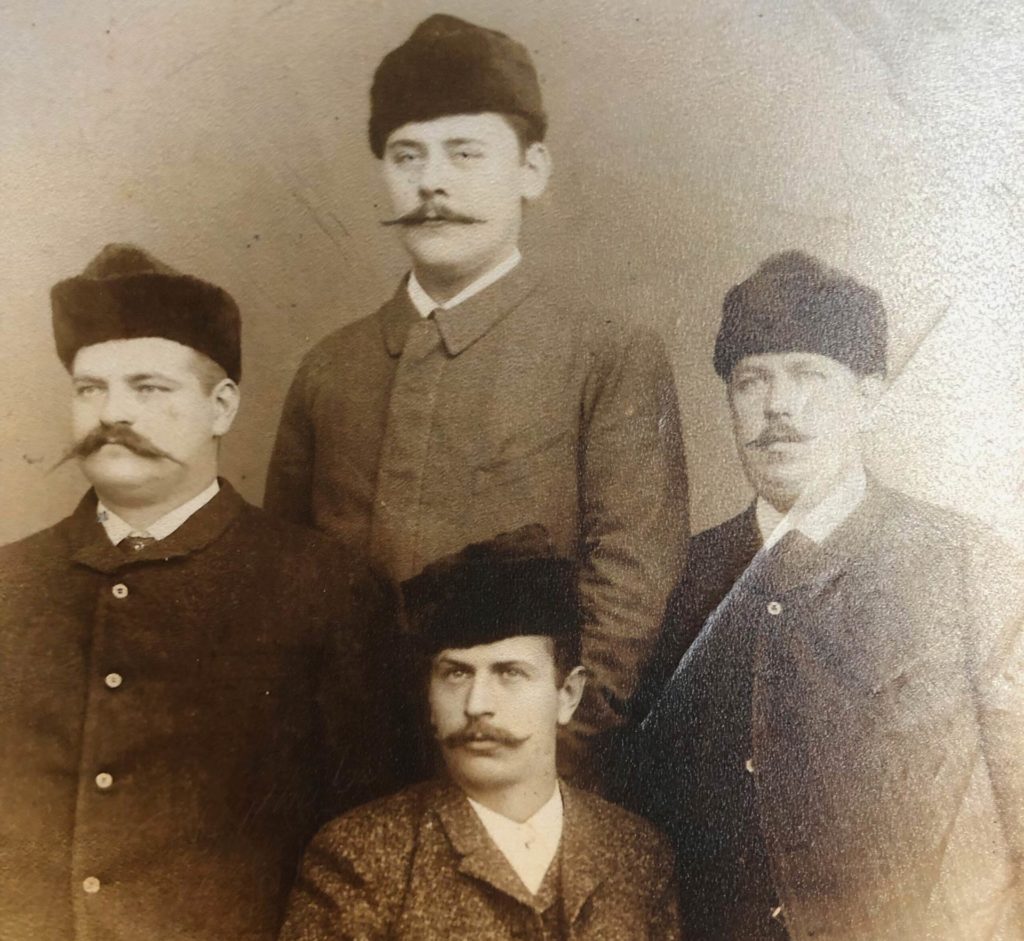
Von der Zunft zur Einheit: Die Evolution von Wildbräu als älteste Privatbrauerei der Welt
Eine der Grafinger Brauerein, das „Reiterbräu“, wird 1857 von einem Vorfahren des heutigen Bräus Gregor Schlederer gekauft. Das herrschaftliche Brauhaus, später auch Kasperlbräu genannt, wird von der Familie in Wildbräu umbenannt. Außerdem wird der aufrechte, mutige Bär Grafings zum Markenzeichen dieser ersten großen Grafinger Brauerei. Damit ist Wildbräu Grafing, und Grafing ist Wildbräu. Als auch noch Heckerbräu 1901 und das Grandauerbräu 1993 in den dicken starken Strang des Wildbräus eingebunden werden, verbindet es die Erfahrung 500 Jahre traditionelle Grafinger Brauerfamilien.
Als der erste Weltkrieg 1918 zu Ende geht, droht Bayern im Chaos zu versinken, da greifen nochmals mutige Grafinger Bürger ein. Sie unterstützen damit die Entstehung des Freistaates Bayern und retten so die junge Demokratie.
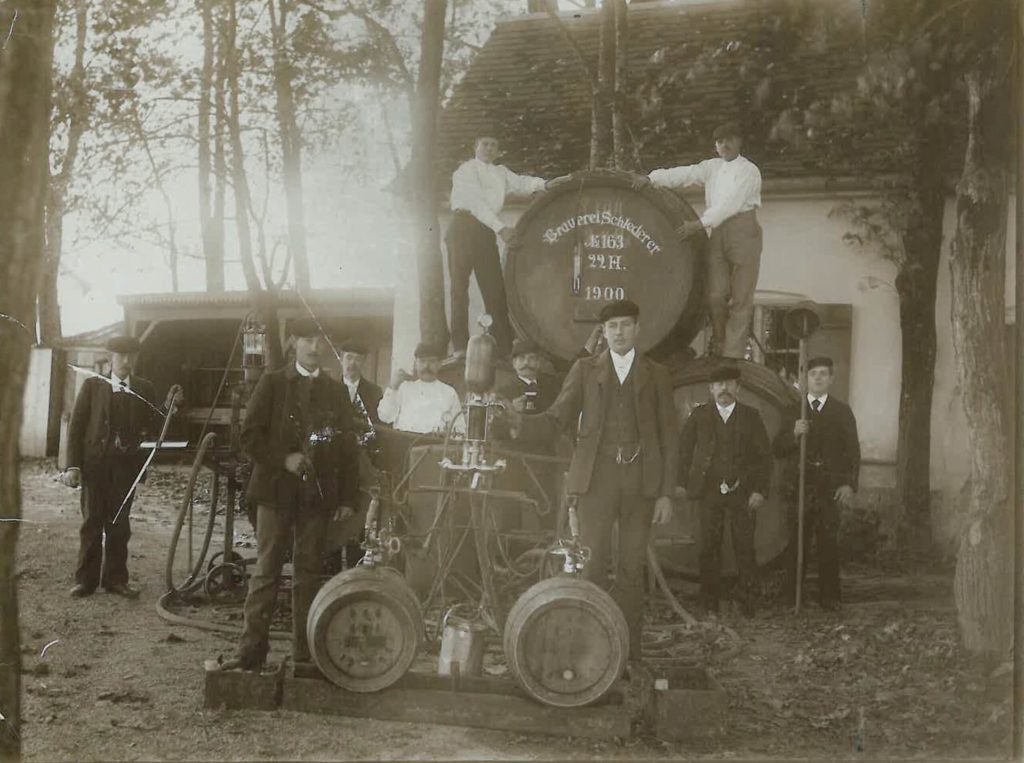
Moderne Zeiten, alte Traditionen: Wildbräu im Wandel der Generationen
1953 wird der tapfere 700 Jahre alte Markt Grafing schließlich zur Stadt erhoben. Wo früher 200 Menschen gelebt haben, leben heute 12.000. Die Stadt Grafing boomt und wächst weiter. Und heute? Ist der junge, mutige Gregor Max Schlederer als direkter Nachfahre für die Geschicke des Wildbräu verantwortlich. Heute trägt Gregor Max Schlederer das Wildbräu und die legendäre Grafinger Brautradition von 1536 in die Zukunft. Es vereint die Kraft und die Geschichte vieler Generationen Grafinger Brauerfamilien in sich.
Gebraut wird zuhause in Grafing vor München mit den heimischen Zutaten Gerste, Hopfen und Hefe – nach dem Reinheitsgebot von 1516. Das Wasser kommt als junges, frisches und nachhaltiges Wasser aus dem Grafinger Becken. Es ist angereichert mit den Mineralien der Alpen, Afrikas und Europas – und den Geschichten aus der Eiszeit.
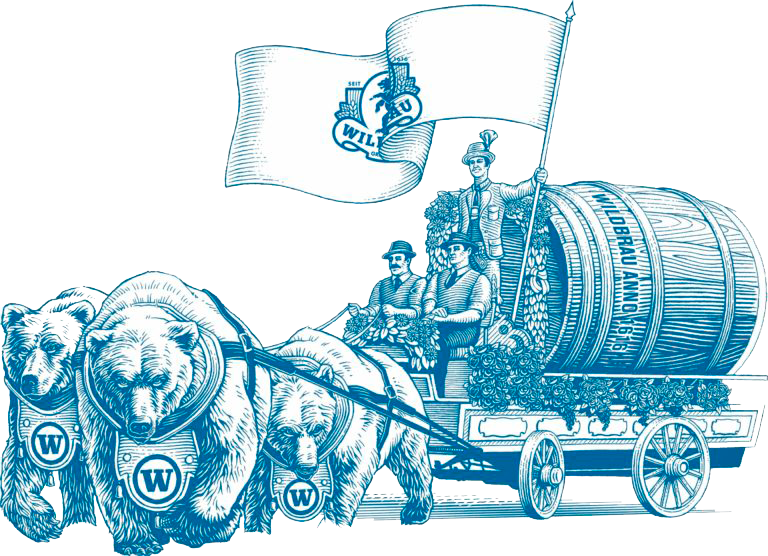
Symbolik und Identität: Der Bär im Wildbräu Logo
Auch der aufrechte, kampfbereite Bär erstrahlt heute wieder in vollem Glanz. Er verkörpert nicht nur den Mut der Stadt, sondern ziert auch Flaschen, Tragerl und Werbeflächen im Grafinger Raum, im Großraum München und an all den Orten der Welt, wo Menschen dieses wilde, urbayerische Lebensgefühl lieben.
Das Wildbräu Logo zeigt den aufrecht stehenden Bär mit der Maischschait über der Schulter. Der Bär ist dem Wappenzeichen der Stadt Grafing entlehnt.

Das Wildbräu Logo würdigt zwei Dinge:
Den Mut der Grafinger Soldaten, die dem bayerischen Herrscher 1322 in der Schlacht von Mühldorf zum Sieg über den österreichischen Herrscher verholfen haben.
Der „Maischeschait“ über der Schulter des Bären weist auf die Geschichte herrschaftlicher und bürgerlicher Brauerfamilien in Grafing hin.
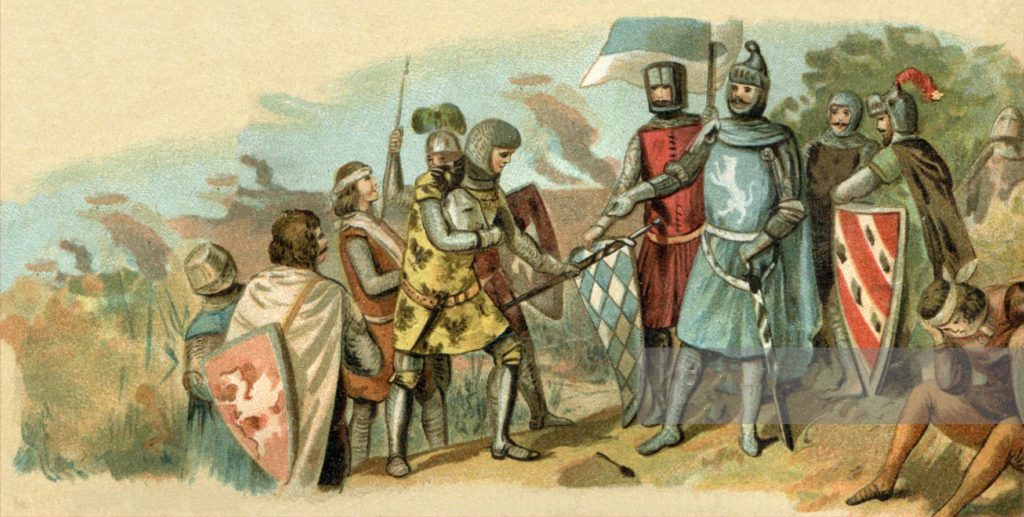

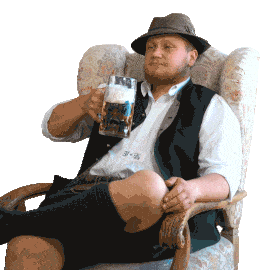
Erlebe die Wildbräu Geschichte live bei einer Brauereiführung
Nach einer Reise durch die reiche Geschichte von Wildbräu, von den eisigen Anfängen Grafings bis zur modernen Braukunst, laden wir dich ein, diese Tradition persönlich zu erleben. Was könnte authentischer sein, als die älteste Privatbrauerei der Welt mit eigenen Augen zu sehen? Besuch uns und tauch ein in die Welt des Wildbräus, wo Geschichte und Moderne aufeinandertreffen. Wir bieten regelmäßig Brauereiführungen an, bei denen du nicht nur die Geheimnisse unserer Braukunst kennenlernen kannst, sondern auch das lebendige Erbe der Grafinger Brauerfamilien spürst. Und natürlich kommt der Genuss nicht zu kurz: Bei der Führung werden ein paar erfrischende Bierchen nicht fehlen!
Hier geht es direkt zu unseren Führungen
